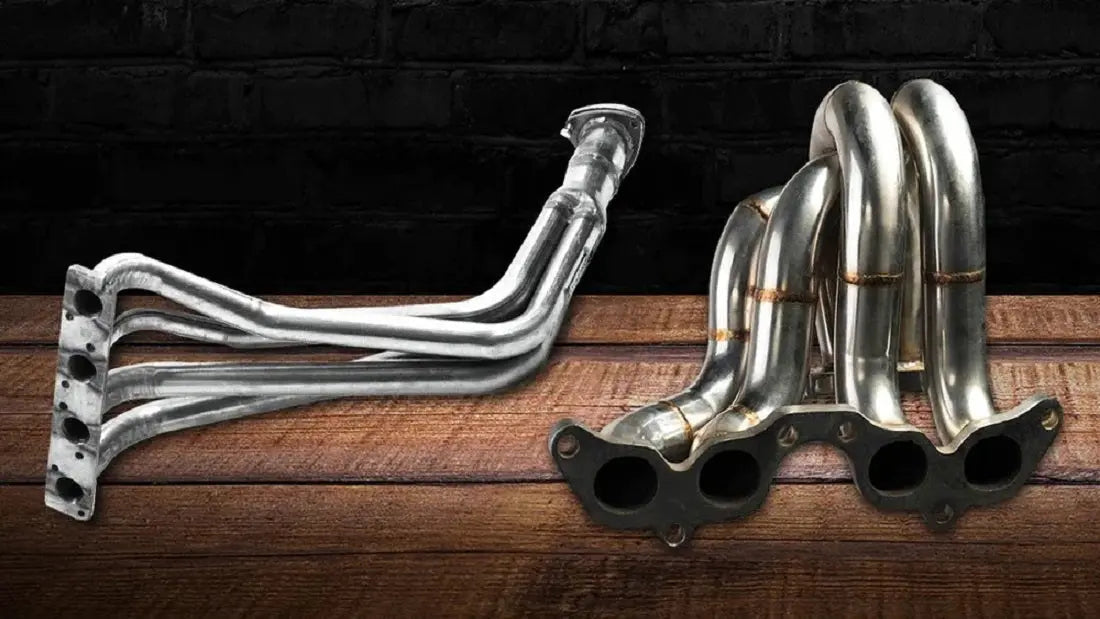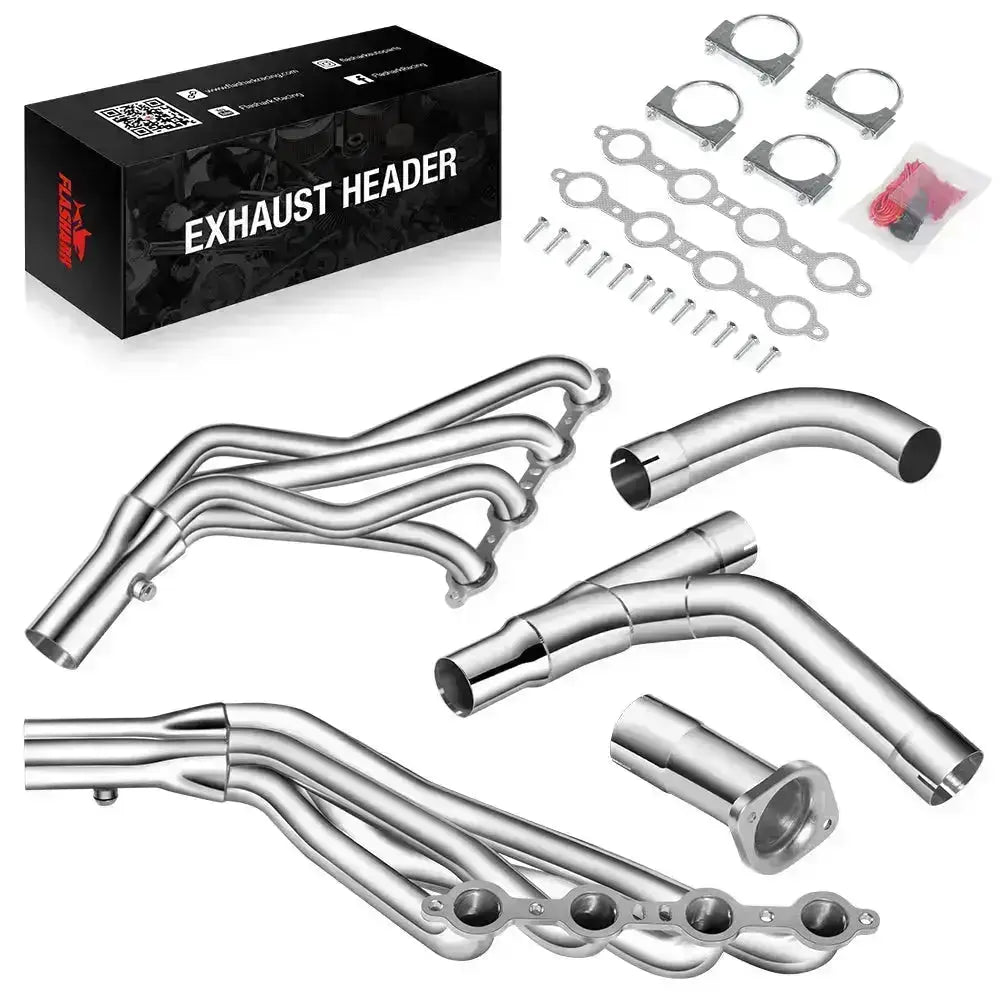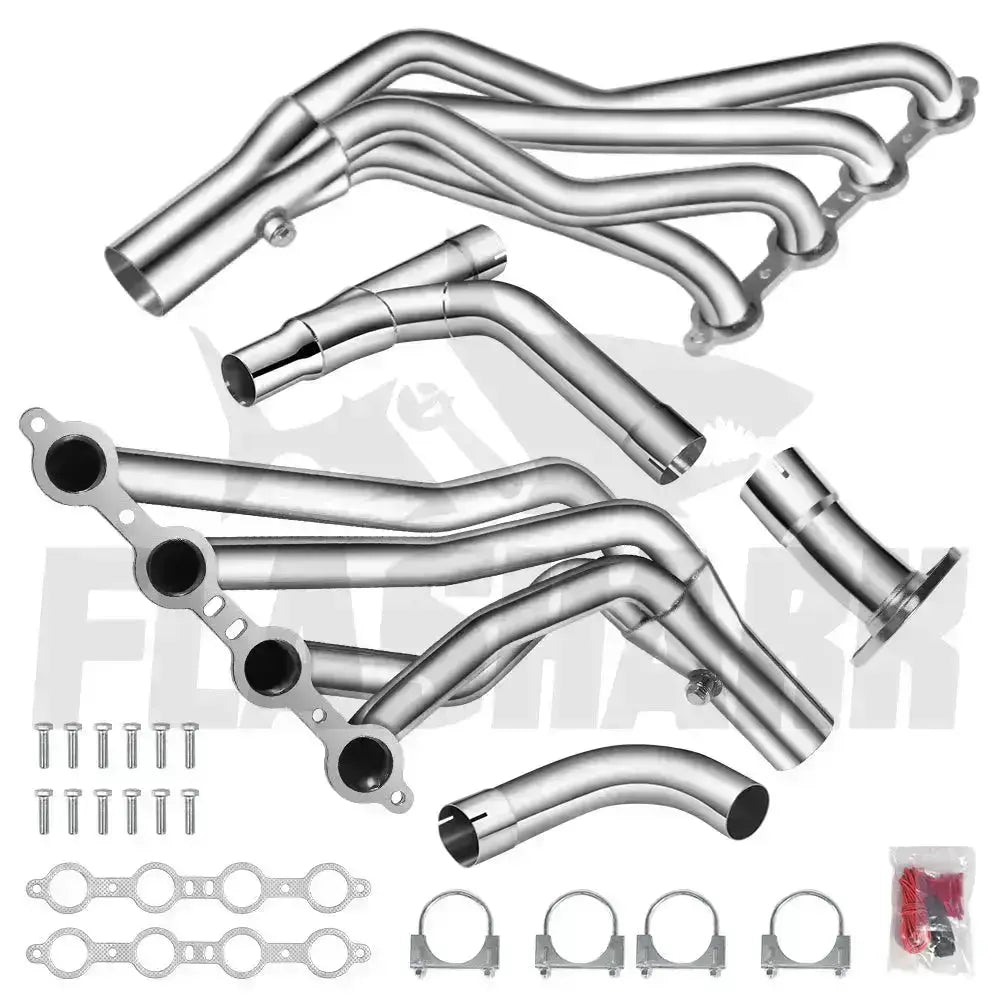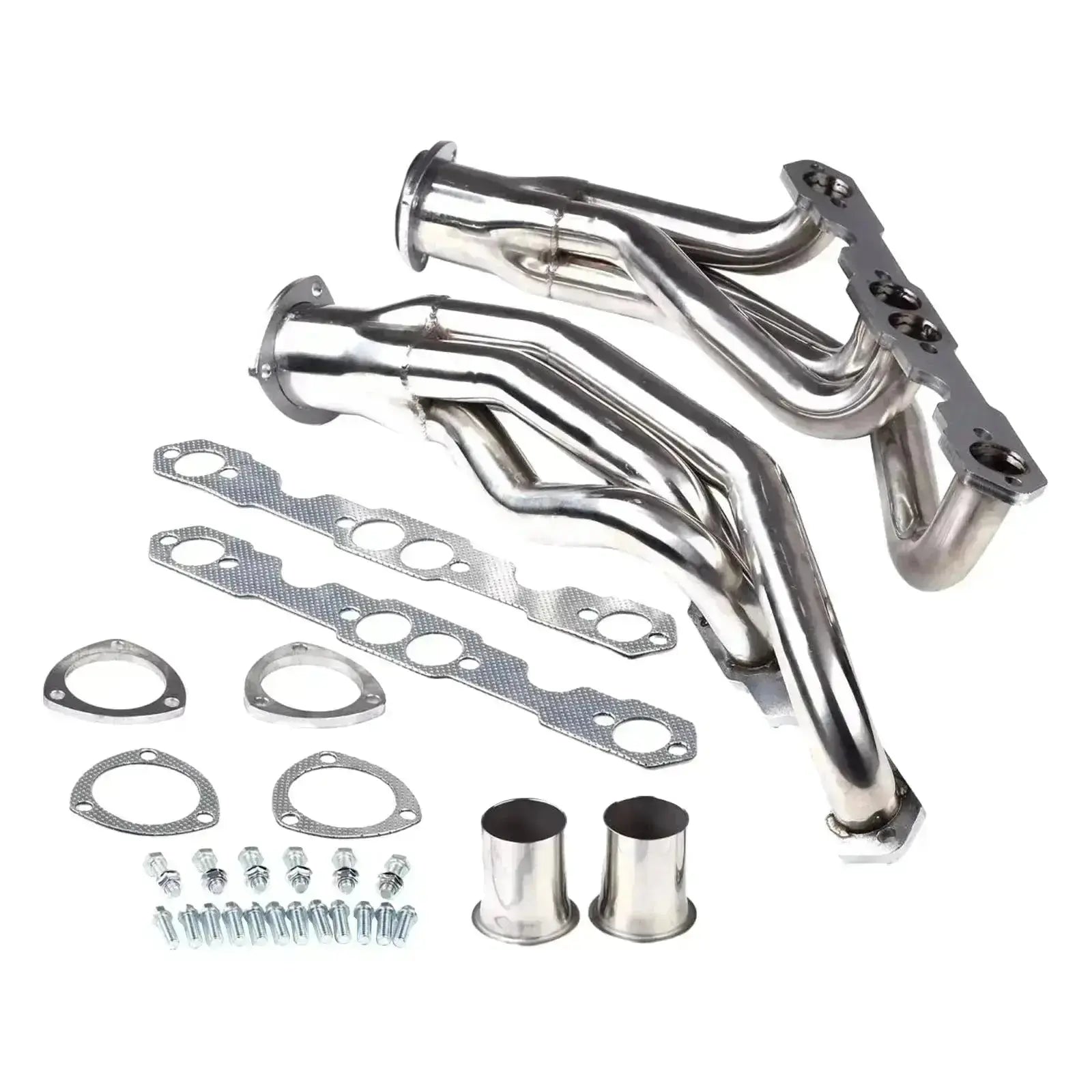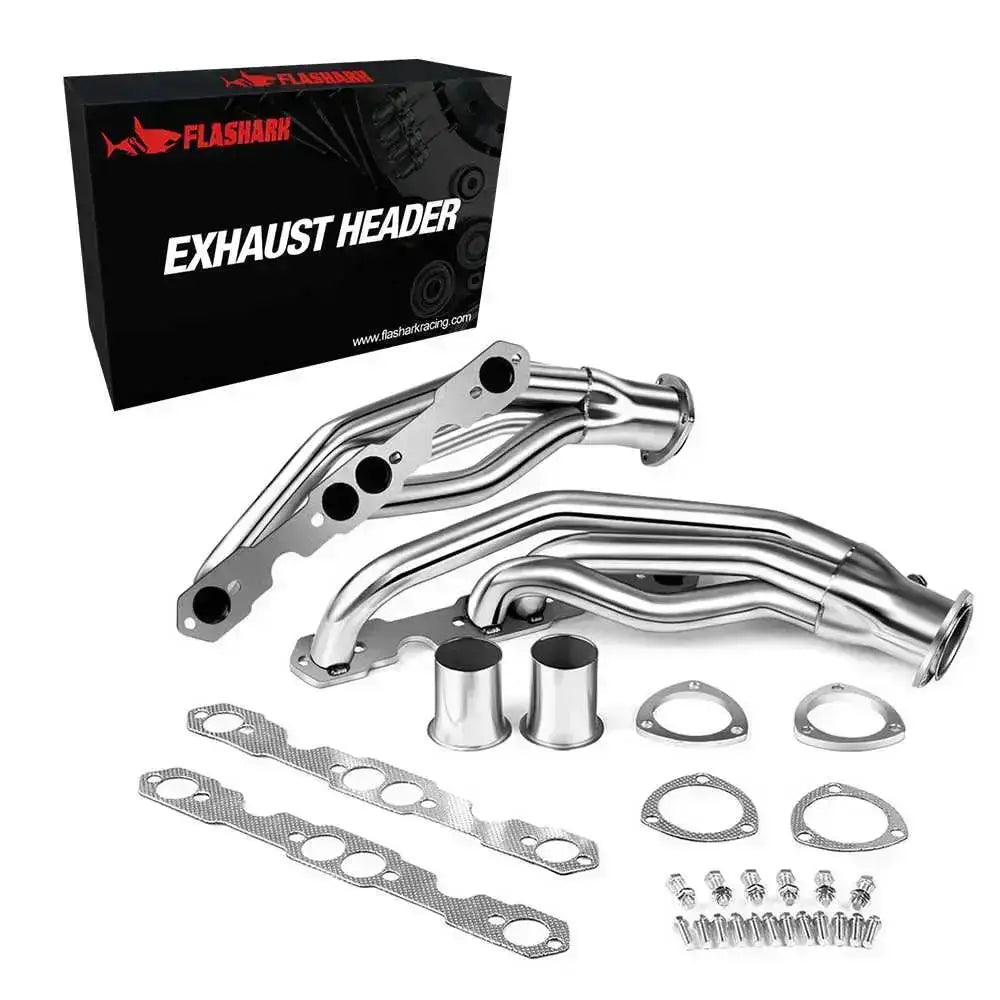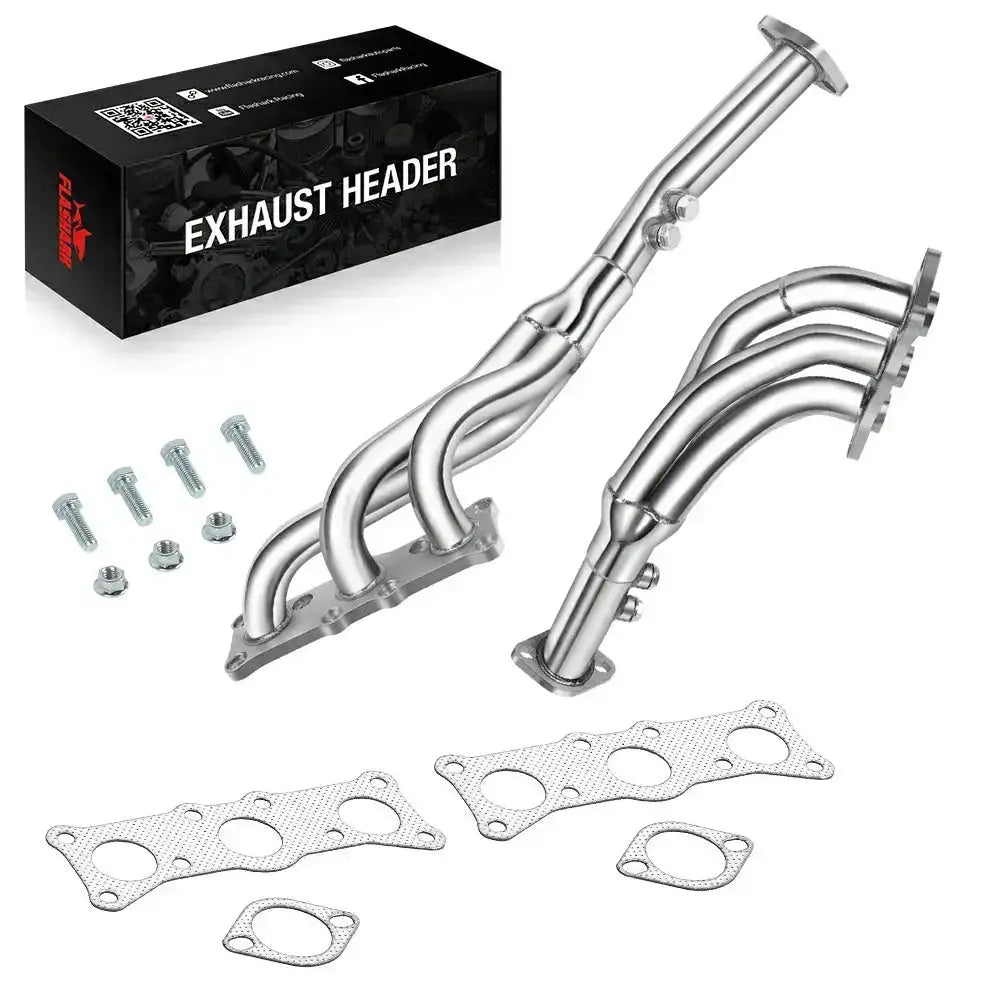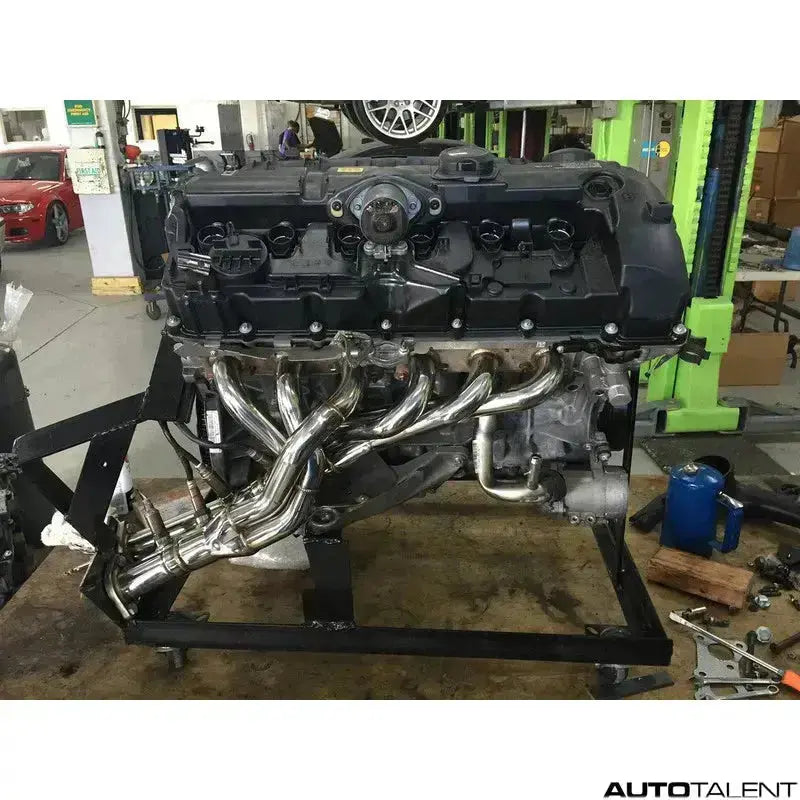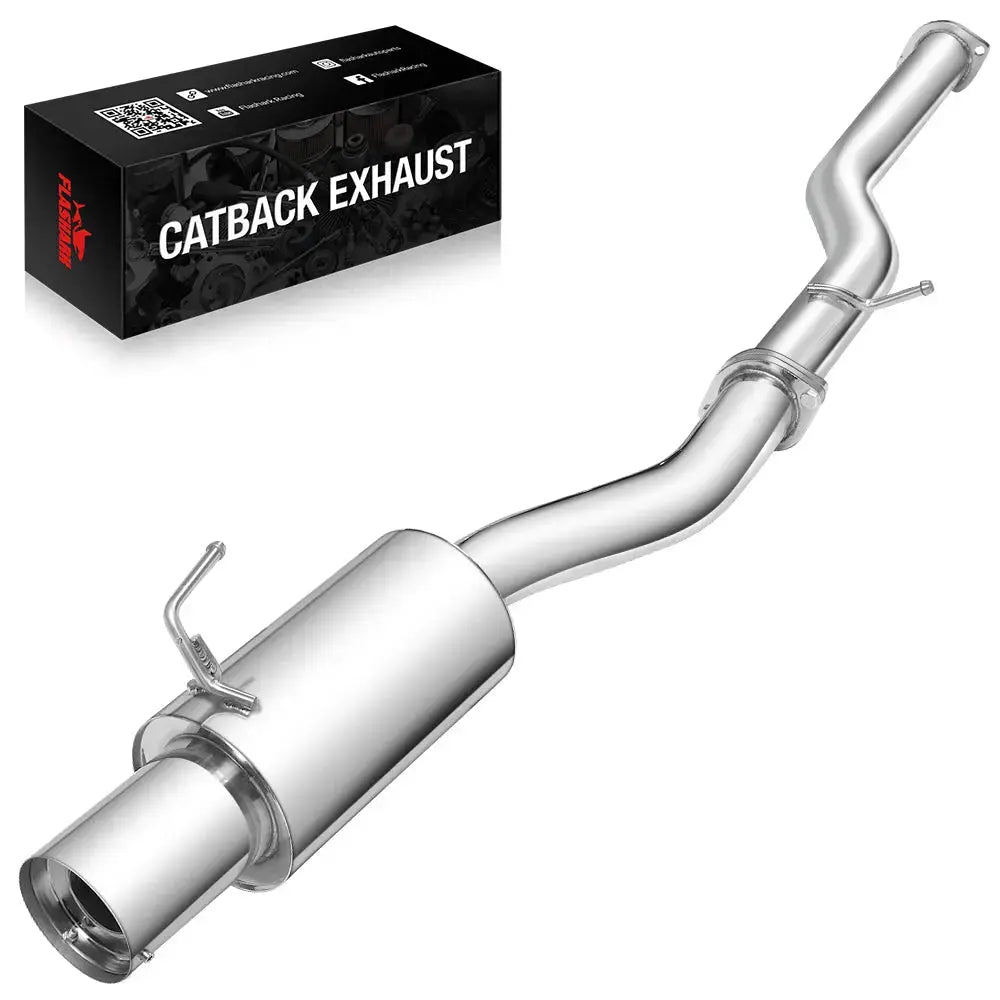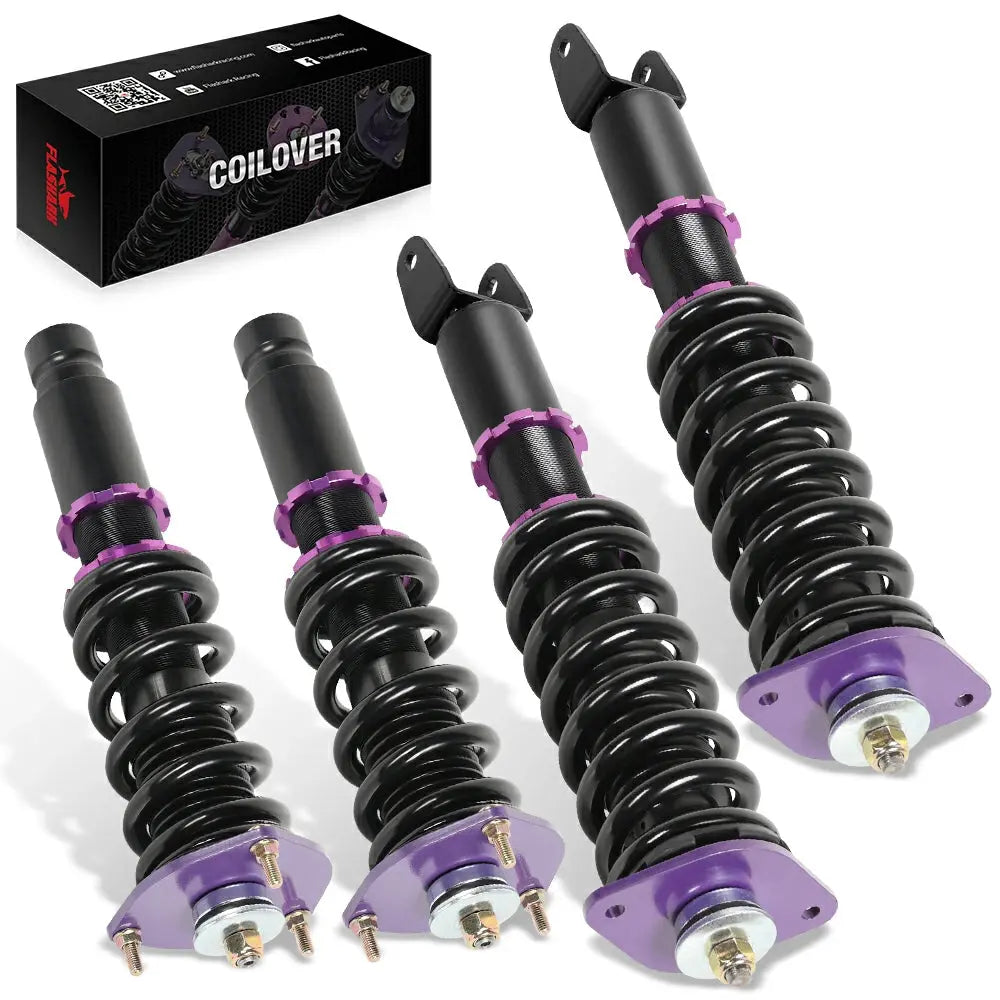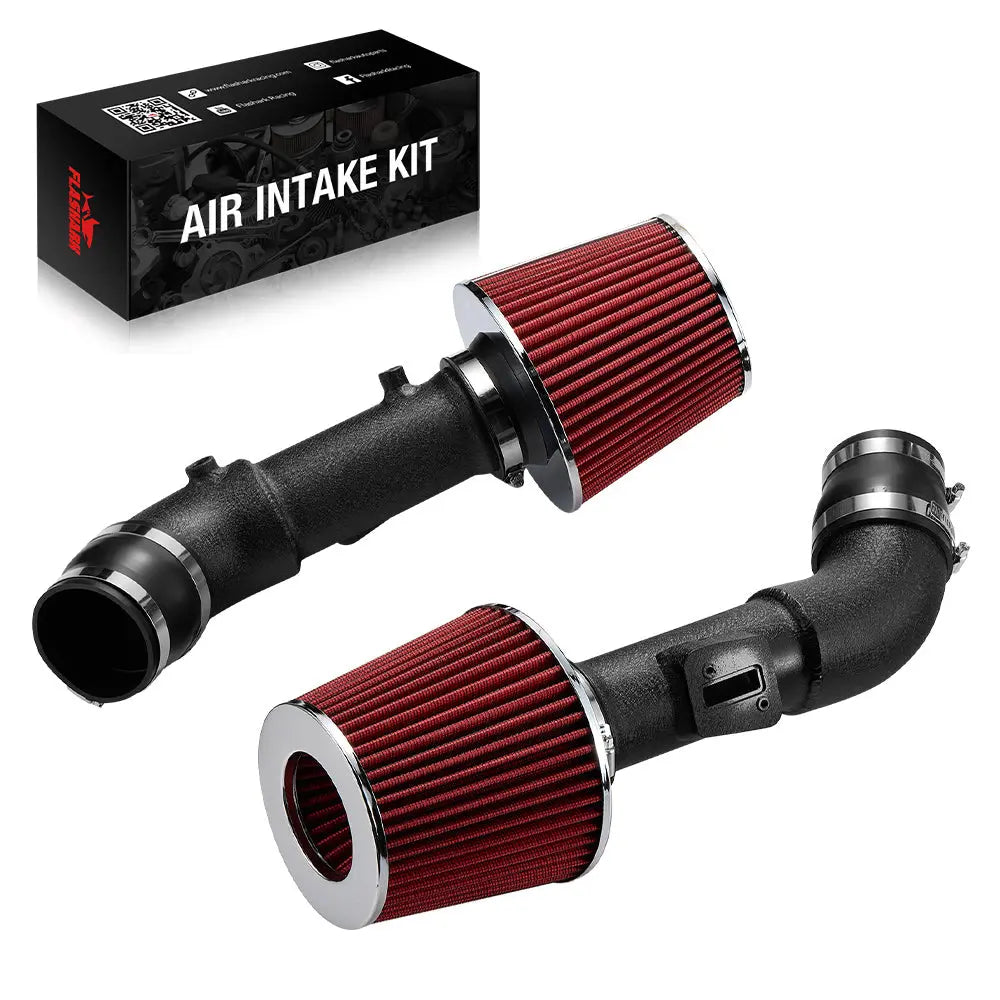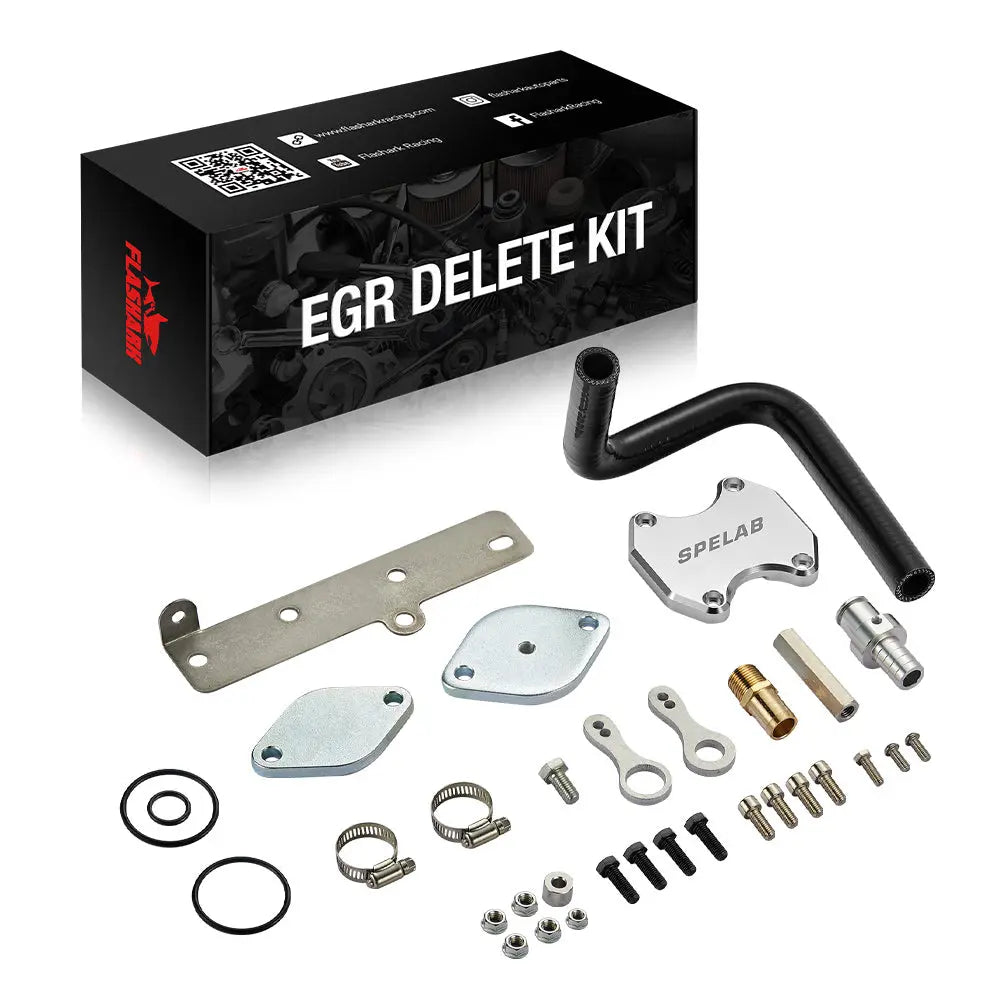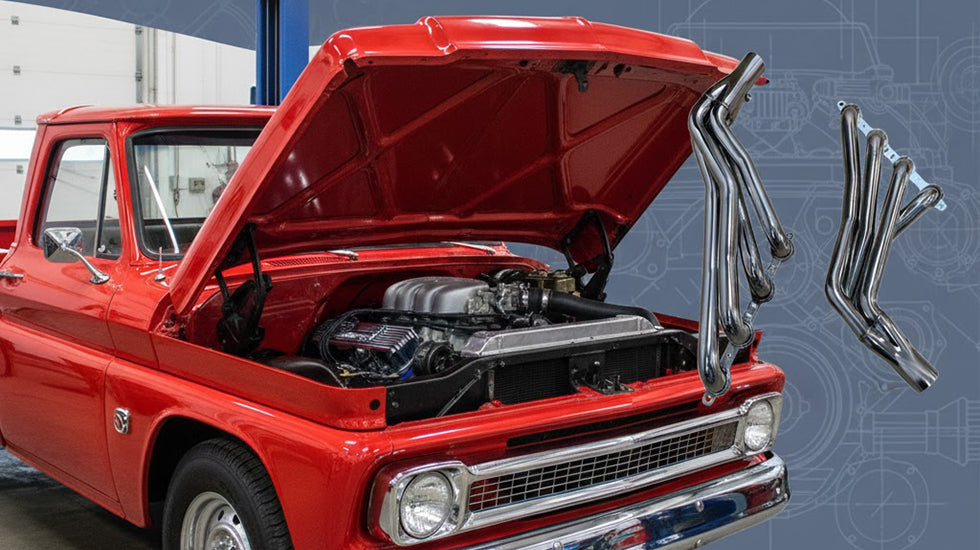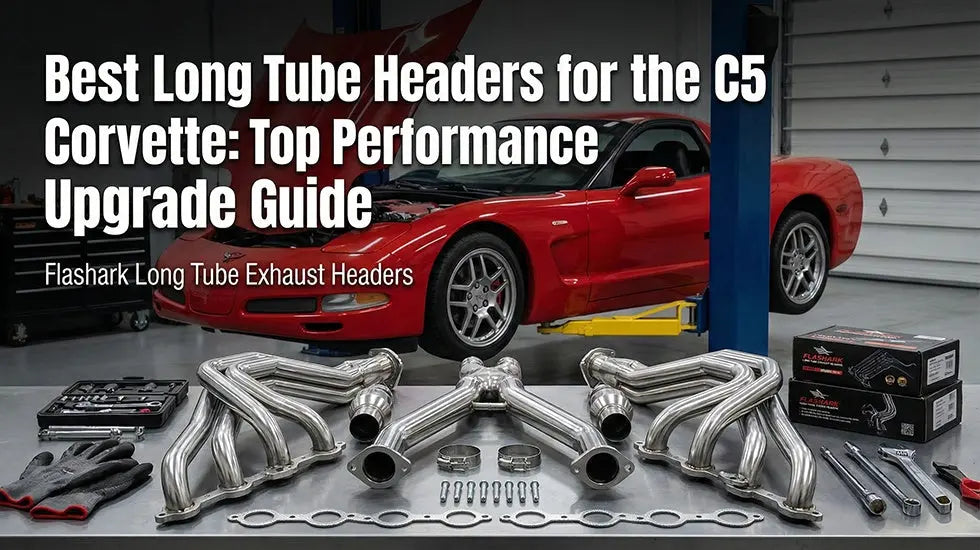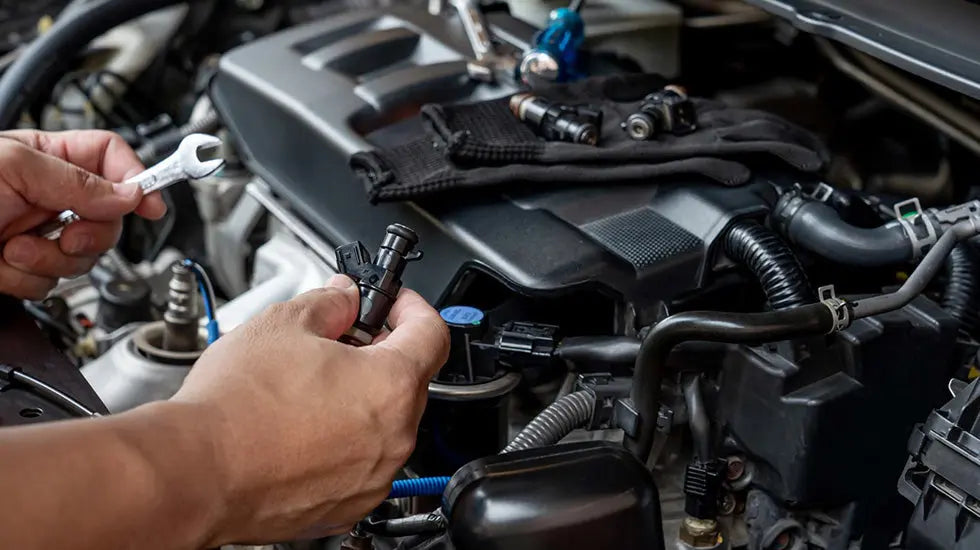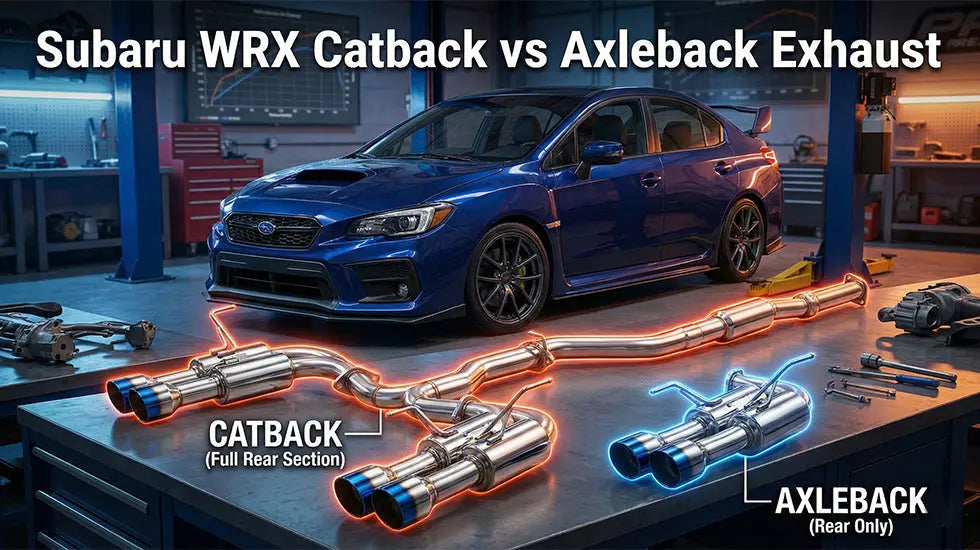An exhaust header is an aftermarket component designed to boost your vehicle's performance by improving exhaust flow. This slight performance enhancement is especially noticeable for high-performance drivers who modify their cars for better speed and efficiency. Exhaust headers work by reducing back pressure in the exhaust system, which allows the engine’s cylinders to push exhaust gases out more efficiently, requiring less effort than in a traditional exhaust system. Depending on your performance needs, different types of headers are available—some tailored for daily driving and others designed for maximum performance on the track.
In a typical exhaust system, the exhaust gases from the cylinders are forced into the exhaust manifold and travel down the exhaust pipe to exit the vehicle. The manifold can create back pressure, making it harder for the cylinders to expel exhaust gases, which reduces overall engine efficiency.

In contrast, an exhaust header consists of individual pipes for each cylinder, all leading to a central collector. These pipes are bent to fit under the hood and cut to the same length, ensuring that the exhaust gases enter the collector in the proper order when each cylinder fires. This eliminates the back-pressure problem and increases the efficiency of the engine.
Some high-performance exhaust headers are modified to further reduce effort by drawing exhaust gases from the next cylinder, making the engine work even less. Low-performance headers are ideal for drivers seeking better acceleration and power for everyday driving or hauling heavy loads, while high-performance headers are perfect for those looking to achieve maximum speed and horsepower.
Since exhaust headers are designed for specific vehicle models, it's essential to choose the right one for your car. Always have your exhaust header installed carefully—preferably by a professional—to avoid issues like exhaust leaks, which can be dangerous and lead to carbon monoxide poisoning if fumes enter the vehicle’s interior.
How Exhaust Headers Work
Exhaust headers work by addressing the issue of back pressure. Unlike a traditional exhaust manifold, which forces exhaust gases from all cylinders into a single pipe, headers provide a separate pipe for each cylinder, directing the exhaust to a central collector. The exhaust gases exit the system more efficiently because there’s no back pressure pressing against the cylinders.
This enhanced exhaust flow results in better engine performance, with increased horsepower, more efficient acceleration, and improved fuel efficiency. Different header designs are optimized for various performance needs—whether you’re seeking a smoother ride, quicker acceleration, or more power for track use.
What is an Exhaust Header Gasket?
An exhaust header gasket seals the connection between the exhaust manifold and the cylinder head. This gasket ensures that all exhaust gases pass through the catalytic converter for treatment and prevents exhaust leaks at the junction, which could otherwise reduce efficiency and potentially harm the vehicle's occupants.
Types of Exhaust Headers
Here are the main types of exhaust headers available, each designed for different driving needs:
- Long-tube headers: These headers feature longer pipes that help increase low-end and midrange torque, making them ideal for vehicles requiring more power at lower speeds.
- Shorty headers: Shorter and quieter than long-tube headers, shorty headers blend into a single exhaust pipe at a closer distance and are perfect for higher RPM ranges, offering a balance between performance and noise.
- Lakester headers: These headers, commonly found on vintage hot rods, have short primary tubes and are known for their distinct appearance and increased performance.
- Tri-Y headers: Featuring a “Y” shaped design, these headers are known for improving horsepower by scavenging air more efficiently than traditional designs.

Exhaust Header Benefits
Installing an exhaust header provides several key performance benefits:
- Increased exhaust flow rate: By reducing back pressure, exhaust headers enable faster, more efficient exhaust expulsion, resulting in improved engine performance.
- Sound improvement: While headers won’t drastically increase your car’s volume, they will alter the sound, giving it a deeper, more aggressive tone.
- Enhanced horsepower: Headers improve exhaust gas flow, which boosts the engine’s overall power output.
The Function of the Exhaust Header Wrap
Exhaust header wraps help to insulate the exhaust system, reducing the amount of heat radiating from the pipes. This not only helps to keep the engine bay cooler but also increases exhaust gas temperatures (EGTs). Higher EGTs increase the velocity of the exhaust gases, improving engine performance. For turbocharged vehicles, using a header wrap can also reduce turbo lag and spool time, allowing the turbo to reach its optimal performance quicker.
What's the Difference Between an Exhaust Manifold and a Header?
Exhaust manifolds and headers serve the same purpose—collecting and expelling exhaust gases—but differ in size, material, and performance.
- Exhaust manifolds are typically made of thick, heavy cast iron and are shorter in length, which creates more back pressure.
- Exhaust headers are usually made from lighter, thinner steel and have individual pipes for each cylinder, which reduce back pressure and improve performance.
For high-performance vehicles, headers are the preferred choice because they allow for better gas flow, increased horsepower, and more efficient engine operation.
Should I Use an Exhaust Manifold or a Header?
For most standard vehicles, the stock exhaust manifold will be sufficient. However, if you’re working on a performance engine or making modifications to your vehicle, switching to an exhaust header can give you the additional boost you’re looking for. Headers provide greater efficiency, more horsepower, and faster acceleration, making them the go-to option for performance enthusiasts.
Do Exhaust Headers Change Sound?
While exhaust headers won’t make your car dramatically louder, they will alter the exhaust sound, usually giving it a deeper, more aggressive tone. The sound change is typically more noticeable at higher RPMs. Headers also help improve engine performance, but they should not be relied upon to drastically increase the volume of your car’s exhaust.
How Much Do Headers Cost?
The price of an exhaust header can vary significantly based on your vehicle’s engine type, the material used, and the brand. Prices typically range from around $200 for entry-level headers to over $1,000 for high-performance models. Whether you’re working with a budget or aiming for top-tier performance, there are exhaust headers available to suit your needs.
Installation Considerations
Installing an exhaust header requires some technical know-how, as the header must be properly fitted to your vehicle. If you’re not confident in your installation skills, it's recommended to have the header installed by a professional. For more detailed instructions on installation and maintenance, be sure to check out our article "How to Install and Maintain Performance Exhaust Headers".
Conclusion
Exhaust headers are a valuable upgrade for those looking to maximize their car’s performance. While they won’t drastically change your vehicle’s sound, they will improve engine efficiency, increase horsepower, and make your driving experience more enjoyable. If you’re ready to take your car to the next level, installing the right exhaust header can make all the difference. Be sure to choose a header suited to your vehicle’s specific needs, and consider professional installation for the best results.

